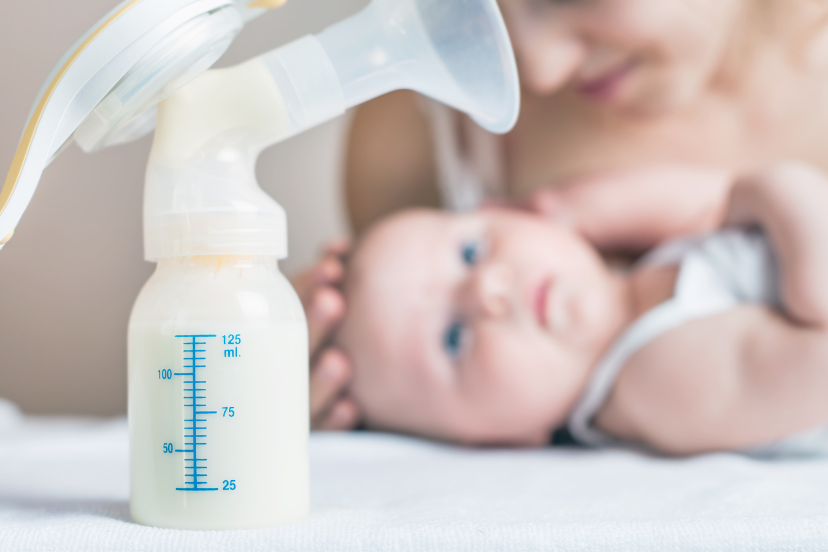How Often Should I Pump If I’m Breastfeeding?
Breastfeeding is a beautiful journey, but it often comes with its own set of challenges. One of the questions that many new mothers ask is, “How often should I pump if I’m breastfeeding?” It’s a valid concern because finding the right balance between breastfeeding and pumping can significantly impact both your milk supply and your daily routine. In this comprehensive guide, we’ll delve into this question and provide you with all the information you need to make the best decision for yourself and your baby.
Introduction
Breastfeeding is a natural and essential part of a baby’s early life. However, there are situations where breastfeeding alone may not be possible or convenient. This is where pumping comes in. Breast pumps allow you to express and store breast milk for later use, ensuring that your baby receives the nourishment they need, even when you’re not available.
In this article, we’ll explore the key aspects of pumping while breastfeeding, including the frequency of pumping, best practices, common challenges, and frequently asked questions. So, if you’ve been wondering how to navigate the world of breastfeeding and pumping, read on to discover the answers you’ve been seeking.
How Often Should I Pump If I’m Breastfeeding?
The frequency of pumping while breastfeeding can vary from one mother to another and can depend on several factors, including your baby’s age, your milk supply, and your personal schedule. However, as a general guideline, here are some recommendations:
Newborn Stage (0-6 Weeks)
During the newborn stage, it’s essential to establish a strong breastfeeding routine. Most experts recommend pumping after breastfeeding sessions to stimulate milk production and build a stash for future use. Aim to pump at least 6-8 times a day, or whenever your baby finishes feeding.
Infant Stage (6 Weeks to 6 Months)
As your baby grows, you may notice more predictable feeding patterns. Continue to pump after breastfeeding, but you can reduce the frequency to around 4-6 times a day. This should help maintain your milk supply while providing some flexibility in your daily schedule.
Solid Food Introduction (6 Months and Beyond)
When you introduce solid foods to your baby’s diet, you’ll likely see a decrease in breastfeeding frequency. At this stage, you can reduce pumping to approximately 3-4 times a day. Focus on pumping when you feel full or to maintain your supply if you plan to continue breastfeeding.
Nighttime Pumping
Pumping at night can be particularly beneficial for maintaining milk supply. Many mothers choose to pump once during the night, typically around 2-4 a.m. This session can help increase prolactin levels and ensure a robust milk supply.
Best Practices for Pumping While Breastfeeding
- Stay Hydrated and Eat Nutrient-Rich Foods: Maintaining a healthy diet and staying hydrated is crucial for milk production. Ensure you’re consuming enough water and nutrient-rich foods to support your body.
- Use a Quality Breast Pump: Investing in a good quality breast pump can make a significant difference in your pumping experience. Electric pumps are generally more efficient than manual ones.
- Create a Relaxing Environment: Find a quiet, comfortable space for pumping. Reducing stress and distractions can help your milk flow more freely.
- Pump After Nursing Sessions: To boost your milk supply, try to pump about 15-30 minutes after each nursing session. This signals to your body that it needs to produce more milk.
- Store Milk Properly: When storing breast milk, use clean, sterile containers, and label them with the date. Follow guidelines for refrigeration and freezing to ensure the milk remains safe for your baby.
FAQs About Pumping While Breastfeeding
1. Can I Start Pumping Right After Birth?
Yes, you can begin pumping shortly after birth to establish your milk supply. However, it’s essential to prioritize breastfeeding initially for skin-to-skin bonding and colostrum transfer.
2. How Much Milk Should I Aim to Pump in One Session?
In the early days, you might only pump a small amount, such as 1-2 ounces. This is normal. Over time, your milk supply will increase, and you may pump 3-4 ounces or more per session.
3. Is It Okay to Skip a Pumping Session?
Occasionally skipping a pumping session is usually fine. However, be mindful not to skip sessions too frequently, as it can negatively impact your milk supply.
4. Can I Combine Milk from Different Pumping Sessions?
Yes, you can combine milk from different sessions as long as they are the same temperature. Be sure to cool freshly pumped milk before adding it to already refrigerated milk.
5. How Can I Increase My Milk Supply?
If you’re struggling with a low milk supply, consider techniques like power pumping, nursing on demand, and trying lactation-boosting foods and supplements.
6. When Can I Stop Pumping While Breastfeeding?
You can stop pumping when you and your baby are ready to wean. This could be anywhere from several months to a year or longer, depending on your goals.
Conclusion
Breastfeeding and pumping can be a rewarding yet challenging experience for new mothers. The key to success lies in finding the right balance that works for you and your baby. Remember that there’s no one-size-fits-all answer to the question, “How often should I pump if I’m breastfeeding?” Your pumping frequency will evolve as your baby grows and your circumstances change.
Stay committed to providing the best nourishment for your little one, whether through breastfeeding or pumped milk. Listen to your body, seek support when needed, and cherish the precious moments you share with your baby during this incredible journey of motherhood.




